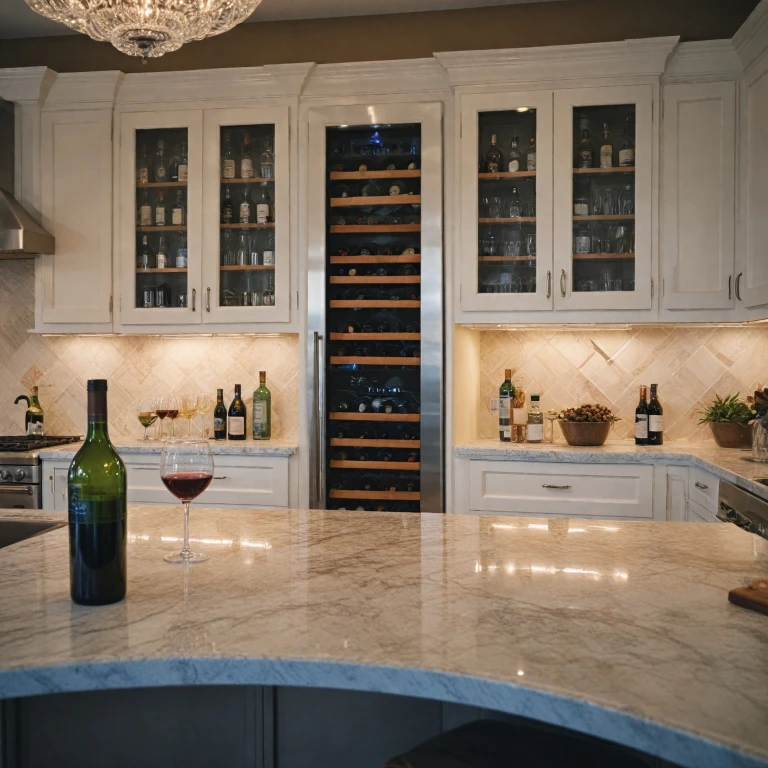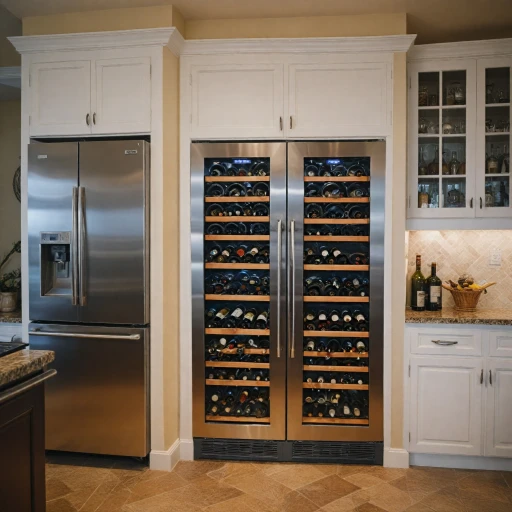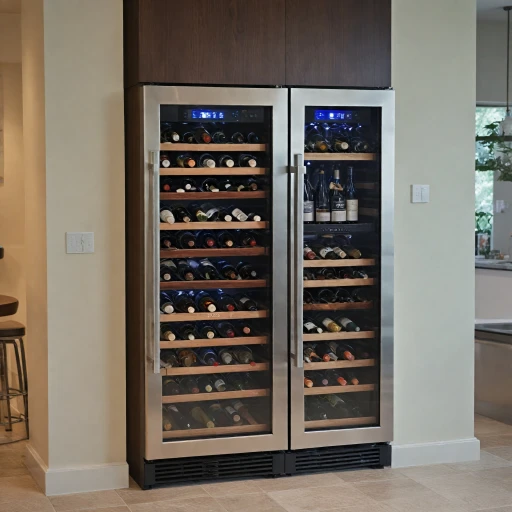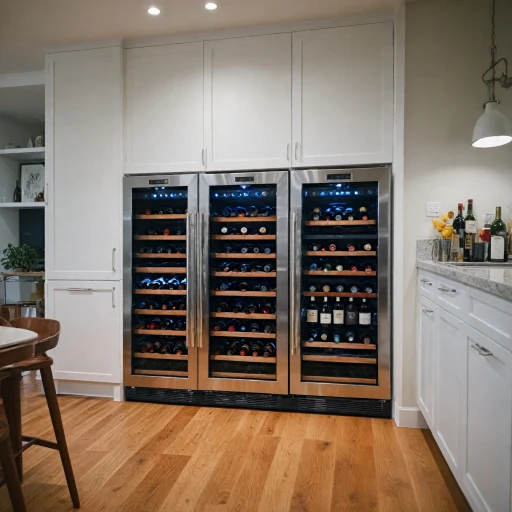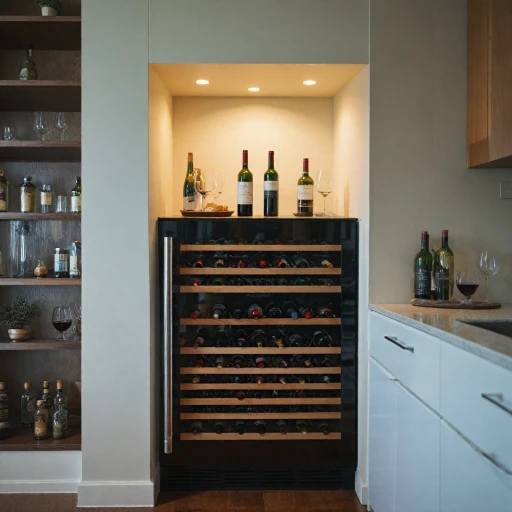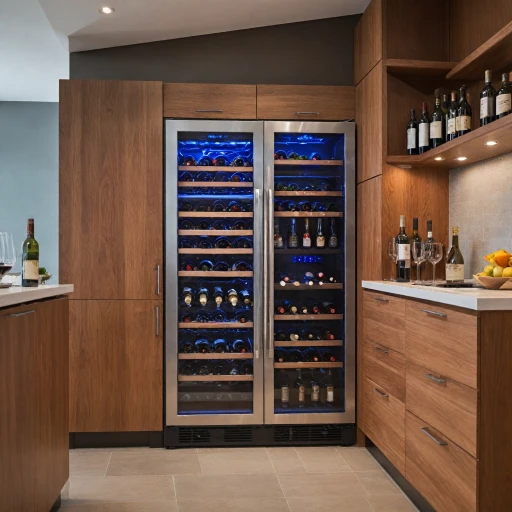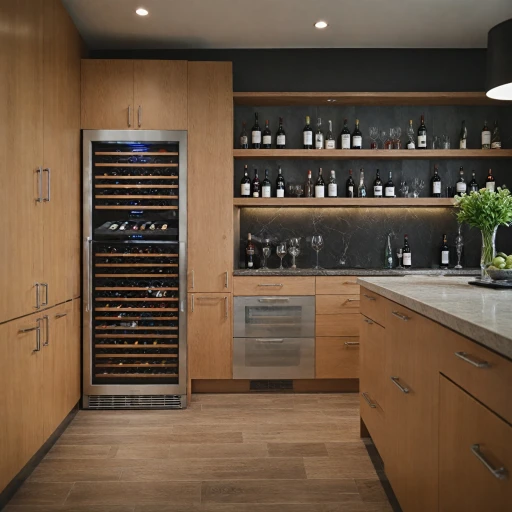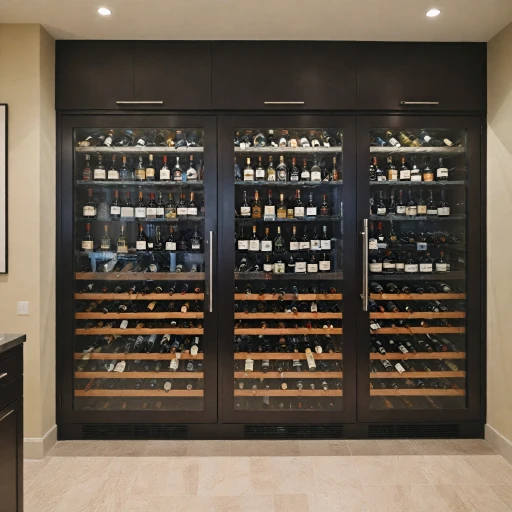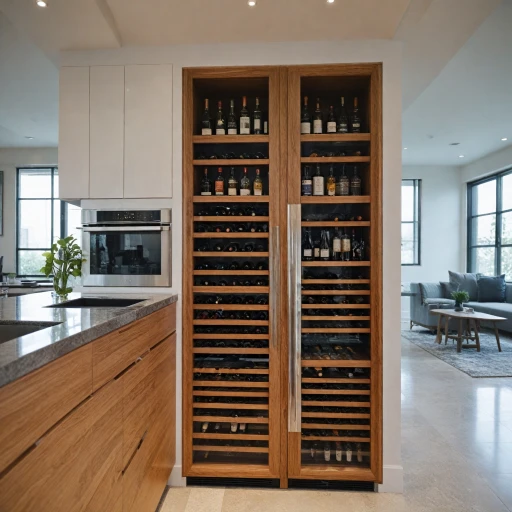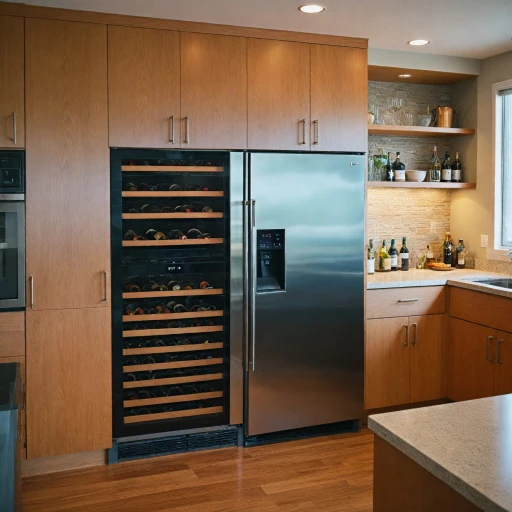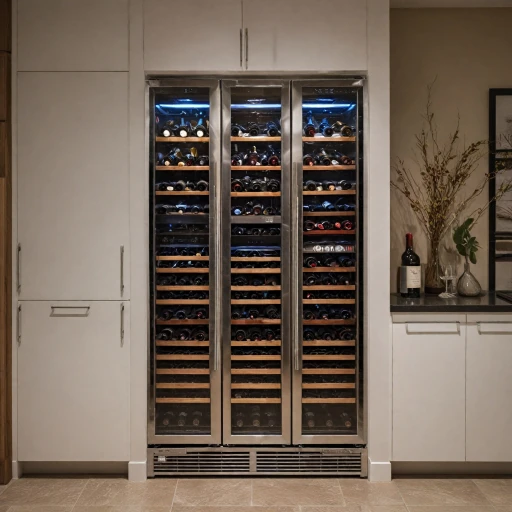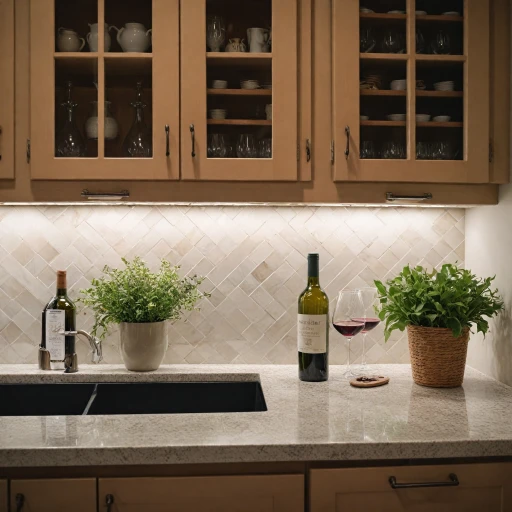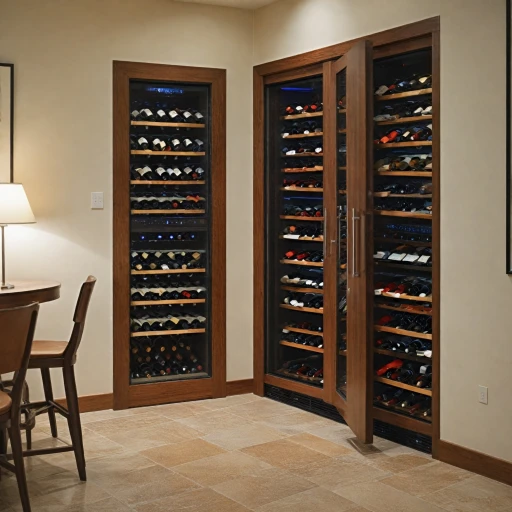
Understanding Dual-Zone Wine Fridges
Introduction to Dual-Zone Wine Fridges
Dual-zone wine fridges have become an essential accessory for wine enthusiasts. Unlike single zone wine coolers, these innovative appliances allow you to store different types of wines at their ideal temperatures. Whether you're a fan of both red and white wines or prefer to keep your collection of bottles diverse, a dual zone fridge provides the flexibility you need. This feature-rich beverage cooler facilitates the creation of two distinct temperature zones within a single unit.
Available in various configurations such as freestanding or built-in models, these wine coolers are designed to cater to different space requirements and aesthetic preferences. Most dual-zone fridges come in sleek black or stainless steel finishes, enhancing the visual appeal of your wine center. Some units include advanced features such as LED lighting, digital controls, and adjustable shelves, providing both convenience and style.
To discover more about the full range of advantages offered by a dual-zone wine chiller, consider exploring the benefits further at dual-zone wine chiller advantages. As you explore, remember that investing in a good quality wine fridge not only helps in maintaining the flavor profile of your wines but also contributes to the overall experience of wine tasting.
Why Temperature Matters in Wine Storage
The Importance of Temperature Consistency
When it comes to preserving the essence of your cherished wine, temperature management is of utmost importance. Wines have precise temperature requirements that vary depending on the type of wine you are storing. A dual zone wine cooler offers a solution to accommodate these diverse needs by providing separate storage environments for different wine types, such as red and white varietals.
Red and White: Different Needs
Red wines, like Cabernet Sauvignon or Merlot, typically thrive at slightly warmer temperatures ranging from 60°F to 65°F, while white wines, such as Chardonnay or Sauvignon Blanc, require a cooler range around 49°F to 55°F. A dual zone wine fridge allows you to set and maintain these specific temperature zones, ensuring each bottle reaches its full flavor potential.
Impact on Flavor and Longevity
Consistency in temperature is key to preserving both the flavor profile and the longevity of your wines. Temperature fluctuations can negatively impact the chemical balance and aging process of your wine, potentially compromising its taste and aroma. Investing in a dual zone wine refrigerator, whether a sleek stainless steel model or a classic black freestanding design, provides peace of mind that your wine collection is being stored under optimal conditions.
Single Zone vs. Dual Zone
While some wine enthusiasts may opt for a single zone wine cooler, which maintains a uniform temperature, a dual zone cooler offers more versatility for those with a diverse selection of wines. This tailored approach to wine storage ensures that each varietal is matured meticulously, allowing you to enjoy your wine at its finest, whether you have a small collection or a fully stocked wine cellar.
Features to Look for in a Dual-Zone Wine Fridge
Key Considerations for Your Wine Storage
When you're browsing for a dual-zone wine fridge, there are several features you should keep in mind to ensure that you're making the best choice for your wine storage needs:
- Temperature Control: Look for a fridge that offers precise temperature control across both zones. Whether you want to store red or white wines, the ability to easily set and adjust the temperature range is crucial.
- Capacity and Size: Consider the bottle capacity and overall dimensions of the fridge. Whether opting for a tall dual zone model or a more compact, inch built variety, ensure it fits smoothly into your designated space while accommodating your wine collection.
- Design and Material: A sleek black or stainless steel finish can add a touch of elegance to your home. Plus, materials like stainless steel are not only attractive but also durable.
- Type of Cooling: Decide between freestanding coolers or built-in models. Freestanding coolers offer more flexibility in terms of placement, while built-in ones blend seamlessly with existing cabinetry.
- LED Lighting: Good wine fridges come equipped with LED lighting that does not emit heat and allows you to display your collection beautifully without affecting the internal temperature.
- Noise Level: If it's going to be placed in a living area or close to sleeping quarters, you might want to look for models known for their quiet operation, as reviews often highlight this feature.
- Additional Features: Some wine fridges come with extras like UV protection, digital displays, or security locks to enhance the safety and storage quality of your precious bottles.
If you're aiming to enhance the aesthetics of your space even more, consider the installation of an under-cabinet wine glass holder to complement your wine fridge.
Top Brands and Models of Dual-Zone Wine Fridges
Leading Dual-Zone Wine Fridge Brands and Models
Finding the right dual-zone wine refrigerator for your needs involves exploring a variety of high-quality brands and models available on the market. Here, we'll delve into some of the top contenders known for their reliability and functionality.- Whirlpool: Known for its sleek design and robust performance, Whirlpool offers both freestanding and built-in wine coolers. Their models often feature stainless steel finishes, LED lighting, and are designed to maintain precise temperature ranges, accommodating both red and white wines effortlessly.
- Frigidaire: A reliable name in home appliances, Frigidaire boasts an impressive range of single and dual zone wine coolers. Many of their models come with customizable temperature zones and can store up to 38 bottles, depending on the fridge size.
- Kalamera: Perfect for wine enthusiasts looking for tall dual zone fridges, Kalamera provides models that can hold up to 46 bottles. Their coolers are particularly noted for their quiet operation and elegant black designs with touch control panels.
- GE Appliances: Known for integrating cutting-edge technology, GE wine fridges offer adjustable temperature settings and robust construction. They often have stainless steel finishes which add a stylish touch to any home wine cellar.
- Wine Enthusiast: As a brand dedicated to wine lovers, Wine Enthusiast offers a range of wine refrigerators catering to every need, from compact beverage coolers to larger capacity fridges. These are perfect for those who frequently adjust storage between red and white wines.
Installation and Maintenance Tips
Placement and Setup Considerations
When it comes to installing a dual-zone wine fridge, the first decision to make is whether to opt for a freestanding model or a built-in unit. Freestanding wine coolers provide flexibility and can be positioned almost anywhere, as long as there's sufficient ventilation. Meanwhile, a built-in wine fridge is designed to seamlessly integrate into cabinetry, ideal for kitchen or bar installations.
Ensuring Proper Ventilation
A critical aspect when setting up your wine cooler is ensuring proper ventilation. This maintains the efficiency of the fridge and prevents overheating, especially in the compressor. Most cooler models will need at least a few inches of space around the unit.
Failing to allow adequate airflow can lead to temperature fluctuations, which could affect both the lifespan of the fridge and the wines inside. If you're opting for a freestanding model, ensure that it is not flush against walls. Built-in wine coolers, on the other hand, often have front-venting to tackle this issue.
Power Requirements
Review the power requirements for your wine refrigerator. Most units will require a standard 110-220V power outlet, but it's always best to confirm specific needs based on the manufacture's guidelines, especially for larger capacity (e.g., bottle dual or tall dual) fridges.
Maintenance for Optimal Performance
Regular maintenance is crucial to ensure that your dual-zone wine fridge operates efficiently. This includes cleaning the stainless steel components and regularly checking the LED displays for accurate temperature readings. It might be necessary to occasionally recalibrate temperature zones to optimize storage for both red and white wines.
Keep an eye on reviews and sale prices to find a model that not only fits your needs but also provides reliable performance over time. This can greatly enhance your wine storage experience, whether you are a wine enthusiast or managing a personal wine cellar.
Common Challenges and Solutions
Overcoming the Common Hurdles of Dual-Zone Wine Fridges
Maintaining optimal temperature zones is essential in a dual-zone wine fridge to ensure both red and white wines remain at their best. However, like any appliance, these fridges can present a few challenges. Understanding these and knowing how to address them can prolong the life of your wine cooler and preserve your collection effectively.- Inaccurate Temperature Readings: It's common to find discrepancies between the set and actual temperature. Regularly calibrate your fridge and use a thermometer to ensure accuracy.
- Condensation Issues: Moisture build-up can occur due to inappropriate sealing. Check and replace door gaskets if needed, especially on older models to maintain a proper seal.
- Noise Levels: While generally quiet, some wine coolers may produce excess noise beyond the typical hum. Ensure the fridge is level on the floor and not pressed against walls or other units which might amplify vibrations.
- LED Display Failures: The display panel in some models might begin to dim or fail over time. This can usually be resolved with a simple replacement. Refer to user manuals and reviews for guidance on expected durability and performance.
- Power Surges: Protecting your wine cooler with a surge protector is essential, particularly if you live in an area prone to electrical fluctuations. This can prevent damage to the compressor and maintain the integrity of the internal environment.
- Space Constraints in Built-in Models: Ensure proper ventilation as required by the manufacturer when installing your unit. Freestanding models need more clearance on all sides compared to built-in designs.

